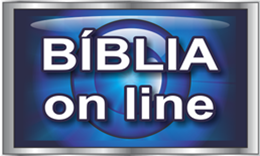
Income statements are considered temporary accounts and are closed at the end of the accounting year. Their net balances, positive or negative, are added to the equity portion of the balance sheet. Some general ledger accounts can become summary records and will be referred to as control accounts. In that situation all of the detail that supports the summary amounts in one of the control accounts will be available in a subsidiary ledger. The income statement will also account for other expenses, such as selling, general and administrative expenses, depreciation, interest, and income taxes.
Small Business Accounting Software Market Share, Size and … – Digital Journal
Small Business Accounting Software Market Share, Size and ….
Posted: Mon, 21 Aug 2023 09:15:38 GMT [source]
Please do not copy, reproduce, modify, distribute or disburse without express consent from Sage. These articles and related content is provided as a general guidance for informational purposes only. Accordingly, Sage does not provide advice per the information included. These articles and related content is not a substitute for the guidance of a lawyer (and especially for questions related to GDPR), tax, or compliance professional. When in doubt, please consult your lawyer tax, or compliance professional for counsel.
Revenue is the business’ income that is derived from the sales of its products and/or services. Revenue can include sales, interest, royalties, or any other fees the business collects from other individuals or businesses. Liabilities are current or future financial debts the business has to pay. Current liabilities can include things like employee salaries and taxes, and future liabilities can include things like bank loans or lines of credit, and mortgages or leases. Make columns on the far left of the page for the date, transaction or journal entry number, and description.
On that note, the general ledger reconciliation procedure may be simplified and performed more accurately using automated accounting software such as Kolleno. In particular, Kolleno is a smart credit control platform designed to aid accountants in conducting systematic and reliable General ledger accounts general ledger reconciliation exercises. Therefore, this essentially summarises the general ledger reconciliation process, which is an obligatory step that all firms need to undergo prior to the publication of their financial statements for the general public’s review.
The general ledger is a set of accounts that records the day-to-day transactions of a business entity by using the double-entry accounting method. The accounts in a general ledger come from your chart of accounts (COA). A subsidiary ledger (sub-ledger) is a sub-account related to a GL account that traces the transactions corresponding to a specific company, purchase, property, etc.
A general ledger is an accounting record of all financial transactions in your business. This includes debits (money leaving your business) and credits (money coming into your business). These transactions can occur across areas such as revenue, expenses, assets and liabilities.
Expense Account
Firstly, the general ledger aids accountants in their preparation of a trial balance, helping them to ensure that all credits and debits balance out. Meanwhile, the general ledger also assists accountants in spotting errors, suspicious financial activities, and fraudulent transactions. As a result, this single source of truth helps the company to make the necessary adjustments to correct any mistakes. The general ledger is comprised of all the individual accounts needed to record the assets, liabilities, equity, revenue, expense, gain, and loss transactions of a business. In most cases, detailed transactions are recorded directly in these general ledger accounts. In the latter case, a person researching an issue in the financial statements must refer back to the subsidiary ledger to find information about the original transaction.
The purpose of a general ledger is to improve accuracy when managing accounts, as well as to monitor the financial position of a business. It does this by providing a collective view of all the company’s accounts and their respective balances. A general ledger tells you about the balances between all the accounts of a company, as well as the account titles and numbers.
But there are some differences between how the two records function so it’s important to understand how they work together. In this guide we’ll walk you through the financial statements every small business owner should understand and explain the accounting formulas you should know. For example, the GL code for an accounts receivable might be account #105. GL codes aren’t substitutes for descriptive account names, but they’re a useful tool for rapid data entry and effective organization. One way to avoid errors is to use a POS system like Lightspeed Retail, which connects with accounting software to automatically sync data.
Reasons Businesses Need a General Ledger
For instance, the purchase of a $2,000 computer would increase the business’s assets by $2,000 while decreasing its cash position by the same amount. The earliest known accounting records date back more than 7,000 years to Mesopotamia, where traders developed a way to track the exchange of goods and services. Accounts payable is the money a company owes to its suppliers and vendors for products and services purchased on credit. When a company buys something from a vendor, it typically doesn’t pay for it immediately. The general ledger should include the date, description and balance or total amount for each account. In the future, if the accountant has confirmed that a corrective journey entry is compulsory, they would need to prepare then a journey entry with all of its errors eliminated.
It’s also known as the primary book of accounting or the book of original entry. After that, the bookkeepers can post transactions to the correct subsidiary ledgers or the proper accounts in the general ledger. While many financial transactions are posted in both the journal and ledger, there are significant differences in the purpose and function of each of these accounting books. If the accounting equation is not in balance, there may be a mistake in your journal entry. Some accounting solutions alert users when a journal entry does not balance total debits and credits.
Resources for Your Growing Business
Sometimes, the general ledger is also known as the book of final entry. We follow ethical journalism practices, which includes presenting unbiased information and citing reliable, attributed resources. Much of our research comes from leading organizations in the climate space, such as Project Drawdown and the International Energy Agency (IEA). Nurture and grow your business with customer relationship management software. Expenses consist of money paid by the business in exchange for a product or service. NetSuite has packaged the experience gained from tens of thousands of worldwide deployments over two decades into a set of leading practices that pave a clear path to success and are proven to deliver rapid business value.

Although there are many possible accounts in a general ledger, they can all usually be classified into permanent and temporary categories. Let’s look at some of the accounts small businesses may use in the general ledger. In this example, the transaction is for a cash payment from a client account to ABCDEFGH Software. Since the cash account is receiving income, then the debit column will show an increase and display a sum for the amount. Here is an example of an accounting system transaction within a general ledger for a fictional account, ABCDEFGH Software. While the above accounts appear in every general ledger, other accounts may be used to track special categories, perform useful calculations and summarize groups of accounts.
What is the purpose of a general ledger?
The general ledger is the second entry point for recording transactions after it enters the accounting system through the general journal. However, the number of debit and credit accounts does not have to be equal, as long as the trial balance is even. For example, you may have 10 payments listed on the credits side to pay for supplies but only two sales (listed in the debits side).
If the business has more liabilities than assets, it can have negative equity. Equity can include things like common stock, stock options, or stocks, depending on if the company is privately or publicly owned by owners and/or shareholders. This ledger pertains to the income earned by the company either from the entity’s main business or other sources. This includes income from sales, interest, discount received, dividends, and investment (Capital Gains). A general ledger takes the information from a journal and categorizes it into the correct accounts.
General ledger
Ledgers contain the necessary information to prepare financial statements. This ledger pertains to the entity’s financial obligation to the outside. This sub-ledger includes creditors, long-term borrowings, and short-term borrowing.
For a more in-depth exploration of accounting software and its features, check out our full reviews of the best accounting software. One of the most significant benefits of using a general ledger is that it becomes easier to spot financial problems in your business. For instance, if you notice that your expenses have been significantly higher over the past year, reviewing your general ledger can help you uncover why that is. Use the general ledger report in QuickBooks to see a complete list of transactions from all accounts within a date range. And if you decide to hire an accountant or bookkeeper, those ledgers can get them up to speed much faster than if they were starting with nothing.
What is a general ledger?
Each entry will also include sub-accounts, which break down the transaction even further. Without a general ledger, your accounting books can quickly become sloppy and disorganized, thus causing financial inaccuracies and issues down the road. If your accounts don’t balance, you might have forgotten to record a transaction, entered an incorrect amount, or miscalculated totals. At the end of each period, transfer your journal entries into your general ledger for small business.
- In the case of certain types of accounting errors, it becomes necessary to go back to the general ledger and dig into the detail of each recorded transaction to locate the issue.
- When a company receives payment from a client for the sale of a product, the cash received is tabulated in net sales along with the receipts from other sales and returns.
- The timing of when information is posted to the general ledger and when the information is reported represents what “has” already happened and limits insight into what’s happening now or what might happen.
- The general ledger also contains information used to calculate the financial performance of an organization.
- It provides a quick overview of which accounts have credit and debit balances to ensure that the general ledger is balanced faster than combing through every page of the general ledger.
- Everyone needs to know the relationship between the double-entry system and the general ledger to understand the rules of debit and credit and how the balances are recorded in each account, as explained above in the ledger accounts section.
Sage makes no representations or warranties of any kind, express or implied, about the completeness or accuracy of this article and related content. Luke O’Neill writes for growing businesses in fintech, legal SaaS, and education. He owns Genuine Communications, which helps CMOs, founders, and marketing teams to build brands and attract customers.
The company’s bookkeeper records transactions throughout the year by posting debits and credits to these accounts. The transactions result from normal business activities such as billing customers or purchasing inventory. They can also result from journal entries, such as recording depreciation. Preparing a ledger is important as it serves as a master document for all your financial transactions. The general ledger also helps you compile a trial balance, spot unusual transactions, and create financial statements. A general ledger uses the double-entry accounting method for generating financial statements.















